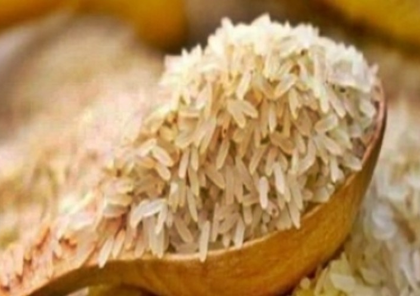Way paved for India's Gulf-bound rice exports to resume as war clouds lift
By IANS | Updated: June 25, 2025 13:38 IST2025-06-25T13:31:36+5:302025-06-25T13:38:49+5:30
New Delhi, June 25 The Israel-Iran ceasefire has paved the way for India's Basmati exports to resume to ...

Way paved for India's Gulf-bound rice exports to resume as war clouds lift
New Delhi, June 25 The Israel-Iran ceasefire has paved the way for India's Basmati exports to resume to the Gulf region, which is a major market for the aromatic rice, with Iran accounting for as much as 35 per cent of the total shipments.
Around one lakh tonnes of Basmati rice was stuck at Indian ports due to the 12-day war between Israel and Iran as ships could not sail to the conflict zone.
These shipments were mainly stranded at the Kandla and Mundra ports on the Gujarat coast.
India's rice shipments to the Gulf countries pass through the Strait of Hormuz and with the war clouds having lifted the coast is clear for the resumption of ships to sail through.
The welcome relief is also reflected in the Indian stock markets with the shares of Indian rice exporters such LT Foods, KRBL and Chaman Lal Setia Exports, which had crashed during the 12-day war, bouncing back after US President Donald Trump announced the ceasefire between Israel and Iran.
Indian rice exports (Basmati and non-Basmati) to Saudi Arabia, Iran, Iraq, Yemen, Jordan, Qatar, and Oman in the Gulf region.
As much as 80 per cent of India's Basmati rice is exported to the Gulf, and 35 per cent of India's Basmati rice is exported to Iran, according to industry sources.
In 2024-25, India exported Basmati rice worth $753 million to Iran up from $681 million in 2023-24, according to data compiled by the Commerce Ministry.
India's rice imports shot up in 2024-25 because of the increase in farm yields due to a better monsoon.
The erratic monsoon in 2023-24 had adversely impacted the agricultural sector and this had led to high food inflation.
The Indian government had been forced to impose restrictions on rice exports to increase the availability of the food grain in the domestic market and bring down prices that were threatening to spin out of control.
Disclaimer: This post has been auto-published from an agency feed without any modifications to the text and has not been reviewed by an editor
Open in app